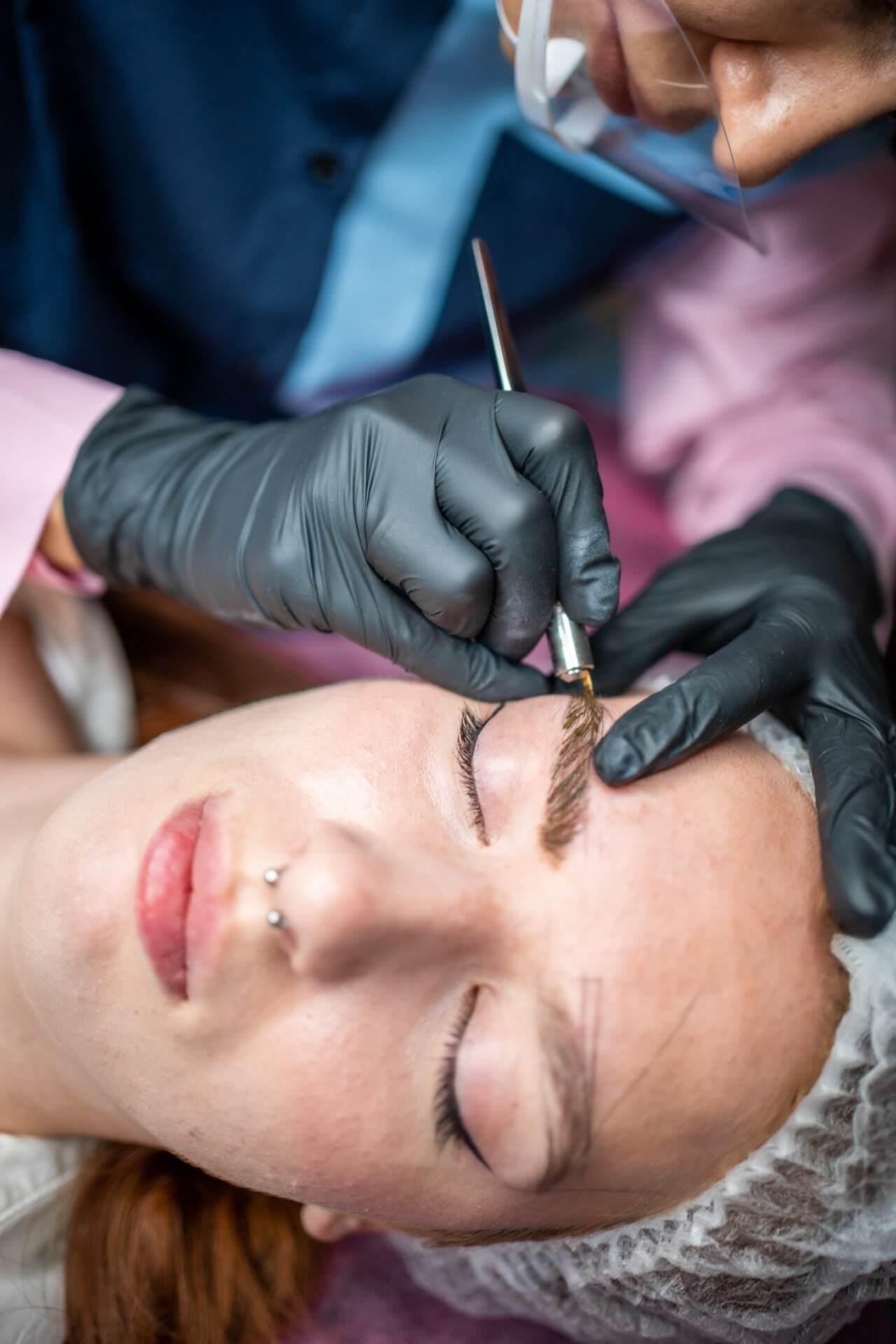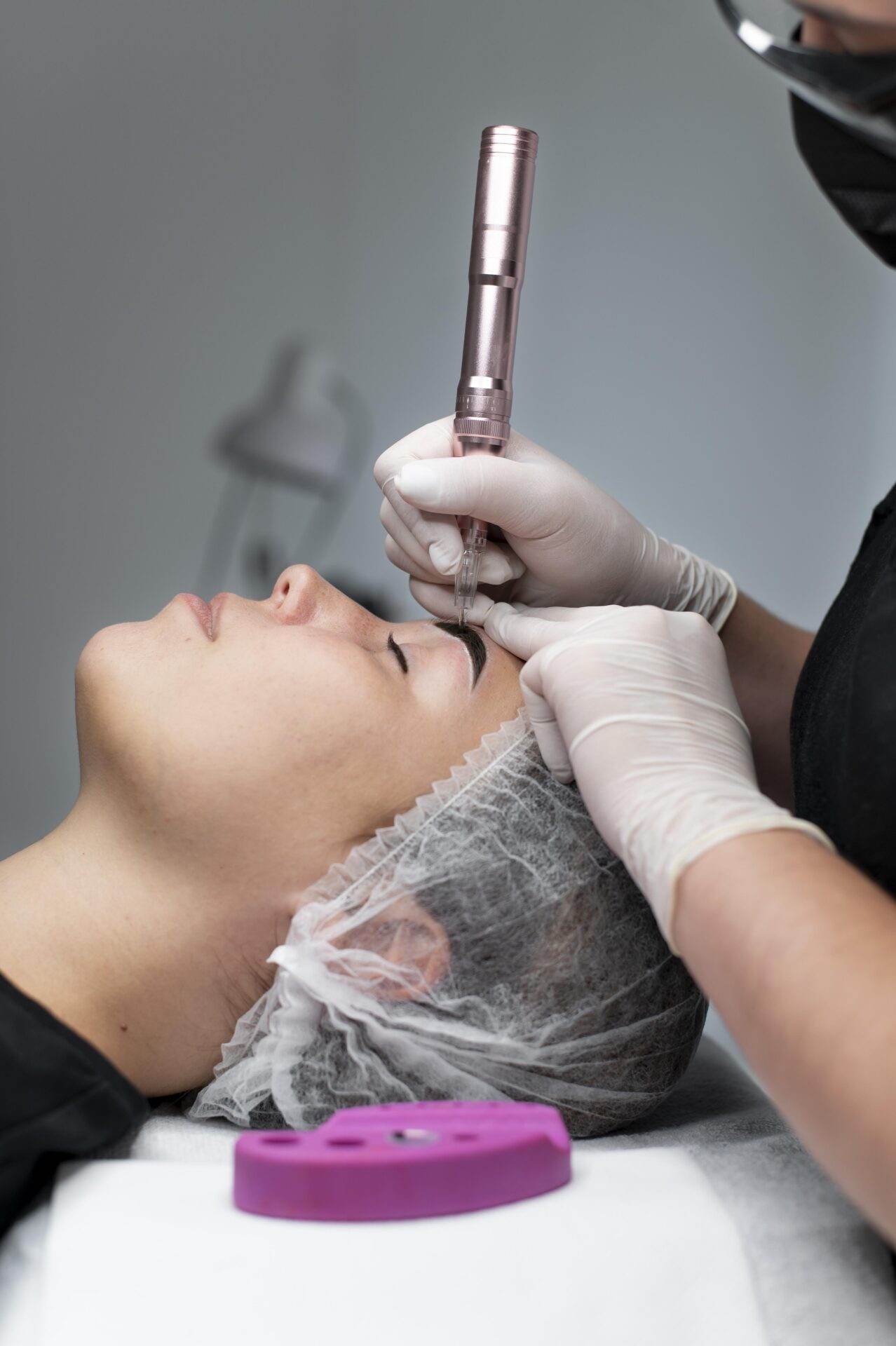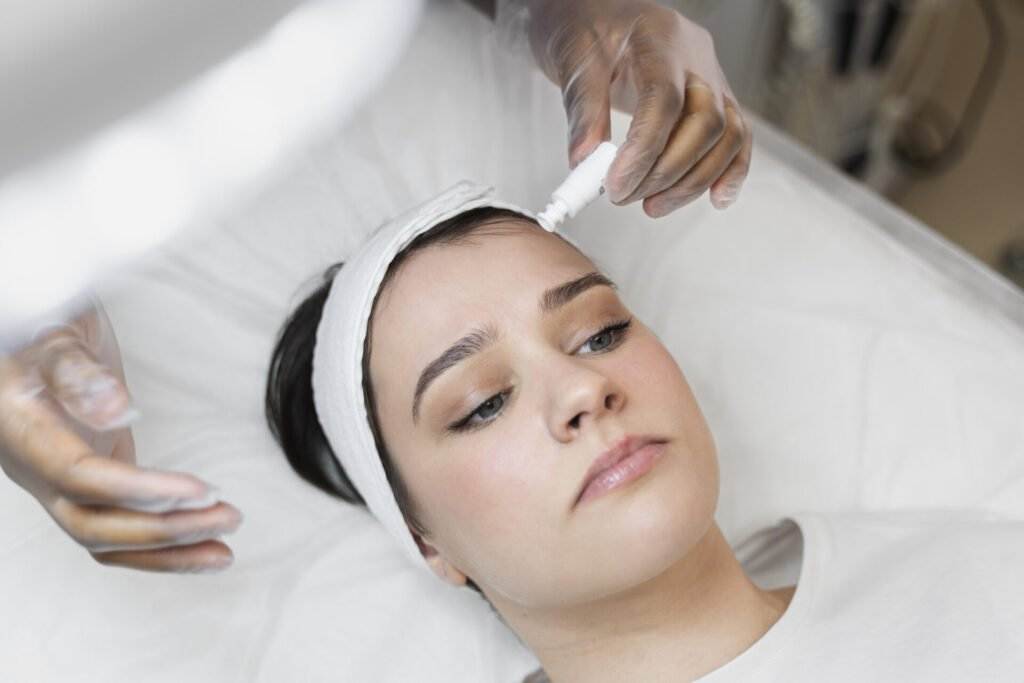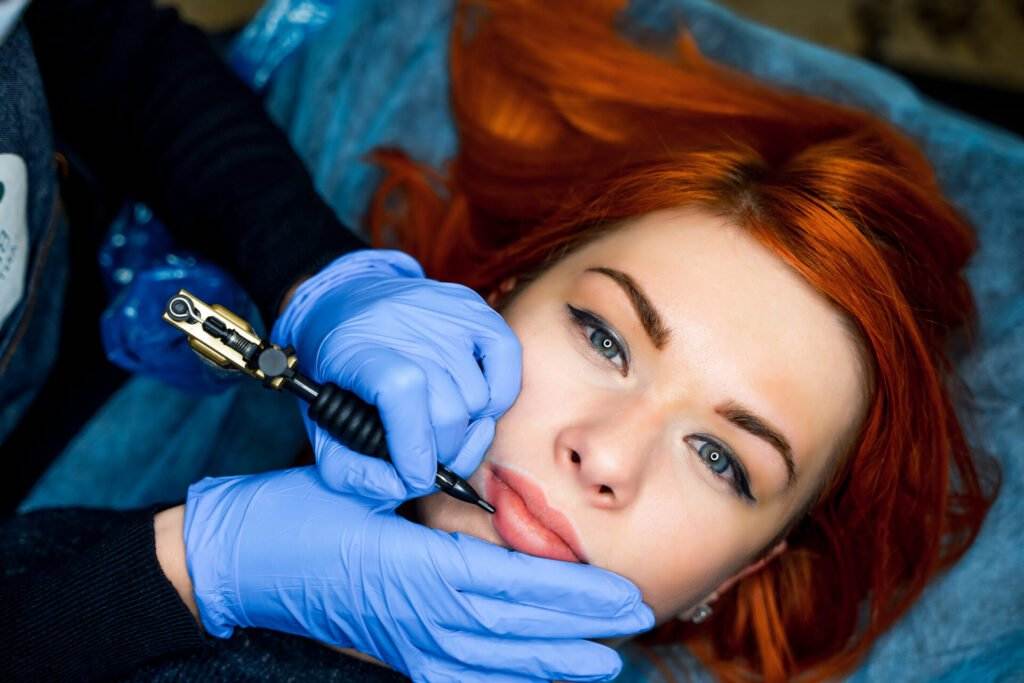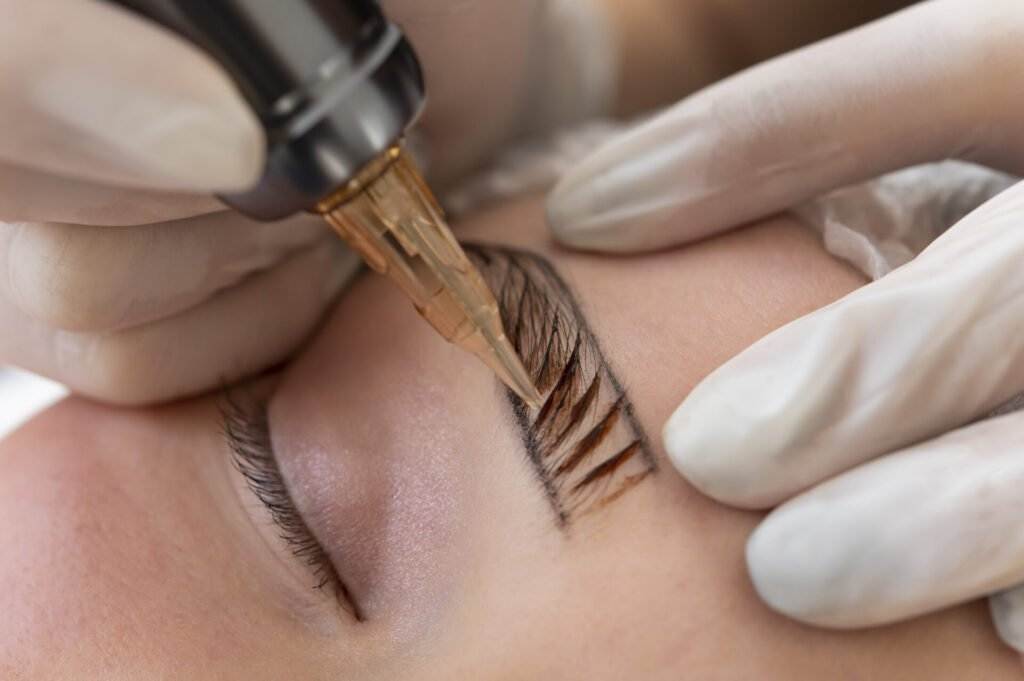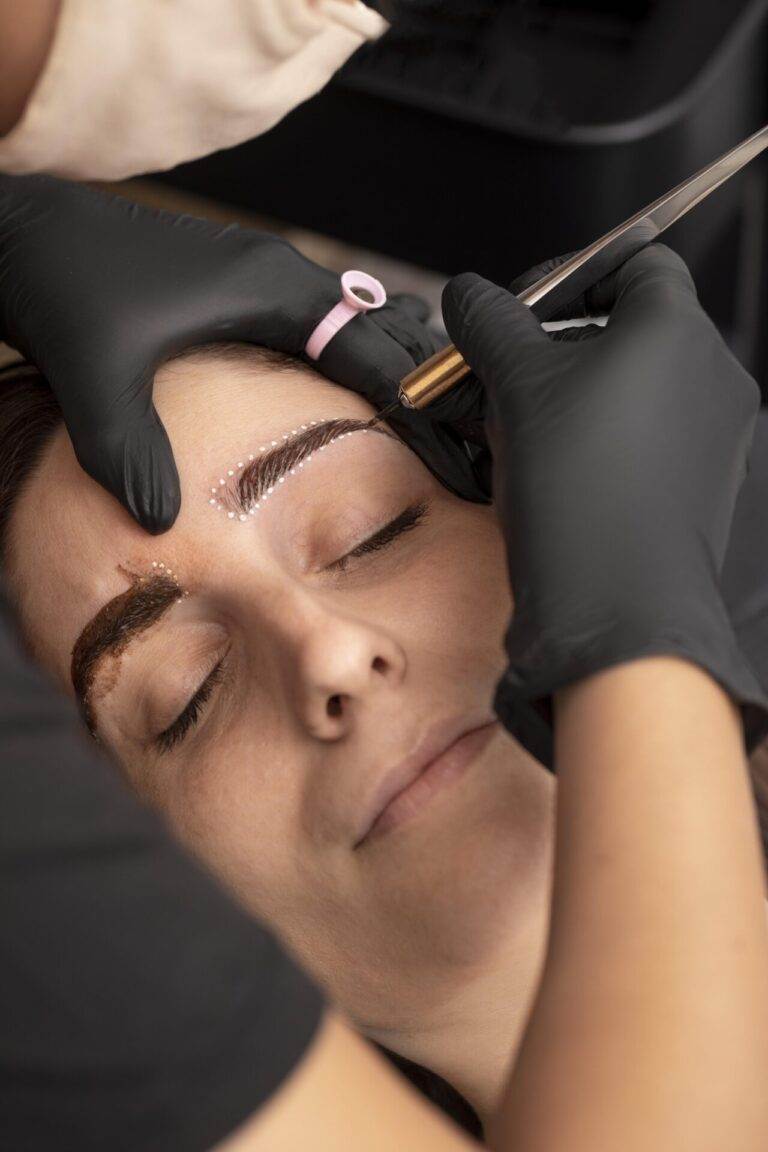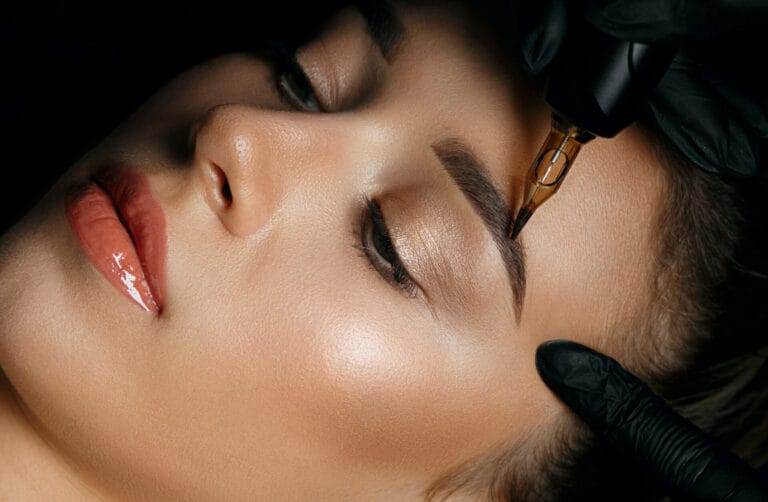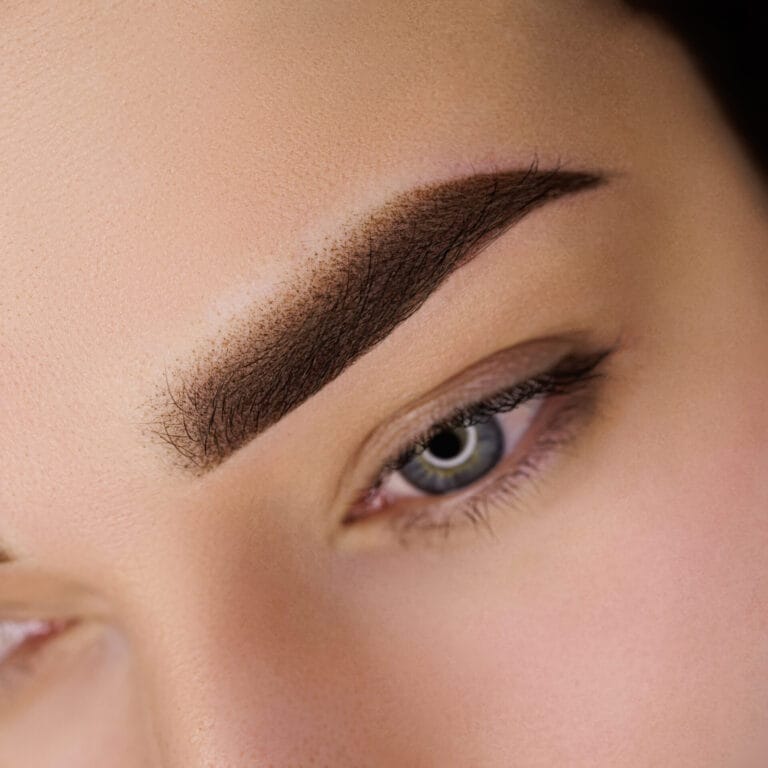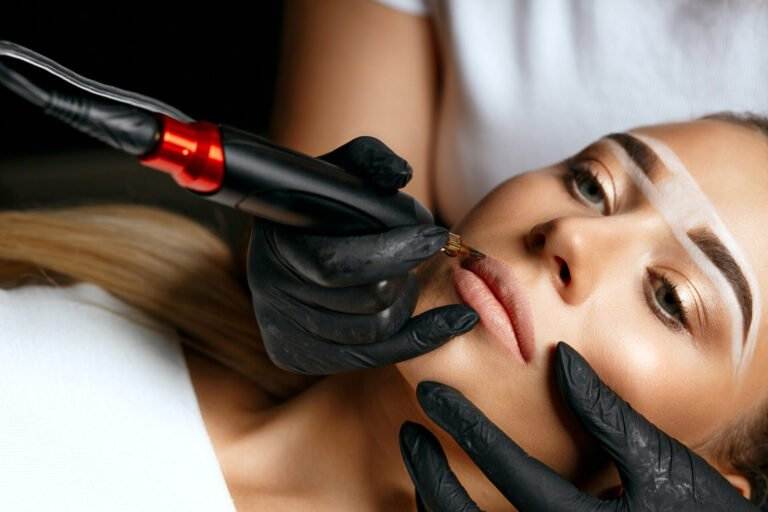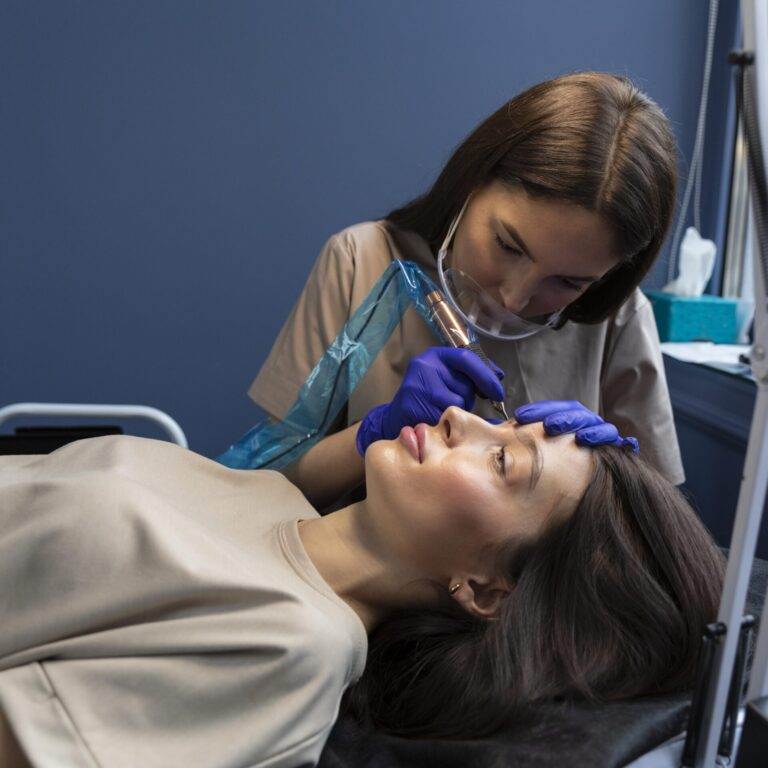Definition of Cosmetic Tattoos
Cosmetic tattoos, also known as permanent makeup, are techniques used to enhance facial features through the application of pigment to the skin. Unlike traditional tattoos, which are often designed for artistic expression, cosmetic tattoos focus on aesthetic enhancement to mimic makeup. These tattoos can be applied to various areas of the face, such as the eyebrows, eyeliner, and lips, making everyday beauty routines simpler and more efficient. This practice employs techniques such as microblading for eyebrows and lip blushing for natural-looking lip color. By using specialized pigments and tools, tattoo artists can create finely detailed patterns that look just like makeup—offering a flawless appearance without the daily effort.
Popularity of Cosmetic Tattoos
The popularity of cosmetic tattoos has surged in recent years, driven by advances in technology and increased awareness among consumers. Many individuals are turning to these procedures for reasons such as:
- Time-saving: Eliminating the need for daily makeup application can be a huge relief for those with busy schedules.
- Confidence Boost: Enhancing one’s features can lead to increased self-esteem and a sense of empowerment.
- Long-lasting Results: Unlike conventional makeup, cosmetic tattoos can endure for months or even years, depending on the type and application.
With numerous influencers and celebrities showcasing their stunning results, the trend has gained a wide following, solidifying its place in the beauty industry as a go-to solution for effortless beauty.
Factors Affecting Longevity
Quality of Pigments Used
When it comes to the longevity of cosmetic tattoos, one of the most critical factors is the quality of the pigments used. High-quality pigments not only enhance the final appearance but also ensure that the color remains vibrant over time. Cheaper, low-quality inks tend to fade faster, often leading to uneven or patchy results. For instance, consider someone who has invested in a beautifully done eyebrow tattoo with premium pigments. This investment can yield results that look fresh and natural for years, whereas someone who opts for cheaper options might find their tattoo fading or changing color within months.
- Palette of Pigments: Opt for companies with a proven track record.
- UV Stability: Quality pigments should resist fading from sun exposure to maintain their vibrancy.
Skin Type and Care Routine
Another significant factor influencing how long cosmetic tattoos last is an individual’s skin type and care regime. Everyone’s skin is unique—some people have oily skin that may cause gradients to fade or blur faster, while dry skin can sometimes retain pigments longer. Moreover, an effective skincare routine can enhance the longevity of the tattoo:
- Hydrate: Keeping the skin moisturized can help the color hold.
- Avoid Exfoliation: Using harsh scrubs can lead to premature fading.
By understanding these factors and choosing quality pigments while maintaining a suitable skincare routine, individuals can maximize the lifespan of their cosmetic tattoos, ensuring they continue to look stunning for years to come.
Different Types of Cosmetic Tattoos
Microblading
Microblading has emerged as one of the most sought-after techniques in the realm of cosmetic tattoos, especially for those looking to achieve fuller, natural-looking eyebrows. This method utilizes a hand-held tool with fine needles that create hair-like strokes on the skin, giving the illusion of real eyebrows. What’s impressive about microblading is its ability to complement various styles and preferences. For instance, one client might desire a bold, defined brow, while another may opt for a soft, feathered look. The results can last anywhere between one to three years, depending on skin type and aftercare.
- Benefits of Microblading:
- Creates a natural appearance.
- Reduces the need for daily eyebrow makeup.
- Can be customized to match hair color.
Lip Blushing
Another popular option is lip blushing—a technique designed to enhance the natural color and shape of the lips. This procedure involves depositing pigment into the lips, resulting in a subtle, natural flush. Many clients choose this method to correct asymmetry, define their lip shape, or simply achieve a fuller lip appearance without the need for fillers.
- Why Choose Lip Blushing?
- Provides a long-lasting lip color, often lasting 1-3 years.
- Saves time during makeup application.
- Aims for a soft, natural appearance, rather than a heavy lipstick look.
Both microblading and lip blushing highlight the versatility and artistry involved in cosmetic tattooing, offering solutions tailored to individual beauty needs that can elevate one’s daily routine.
How Long Do Cosmetic Tattoos Last?
Eyebrow Tattoos
When it comes to eyebrow tattoos, longevity can greatly vary depending on the technique used. For instance, microblading typically lasts between one to three years, while more traditional methods like powder brows can last up to five years. The durability largely depends on factors such as skin type, aftercare, and the quality of pigments used. Clients often notice that as the months go by, the color can fade, losing its initial vibrancy. It is not uncommon for individuals to require touch-ups every 12-18 months to maintain that ‘just-done’ look.
- Factors Influencing Longevity:
- Skin type (oily skin tends to fade faster).
- Exposure to sun and skincare products.
- Aftercare routine post-application.
Eyeliner Tattoos
Eyeliner tattoos present a similar story. Usually, they can last between three to five years, with many clients enjoying the convenience of not having to apply eyeliner daily. Unlike eyebrow tattoos, which might fade faster or require more frequent touch-ups, eyeliner tends to hold up well, especially if proper aftercare is observed.
- Considerations for Eyeliner Tattoos:
- Routine touch-ups may be needed every two to four years.
- Maintain hydration and sun protection around the eye area to preserve the tattoo.
- Different styles (such as a subtle lash enhancement vs. a bold wing) can affect how it ages.
In conclusion, whether opting for eyebrow or eyeliner tattoos, understanding the expected longevity helps set realistic expectations and ensure that clients are satisfied with the results over time.
Maintenance and Touch-Up Tips
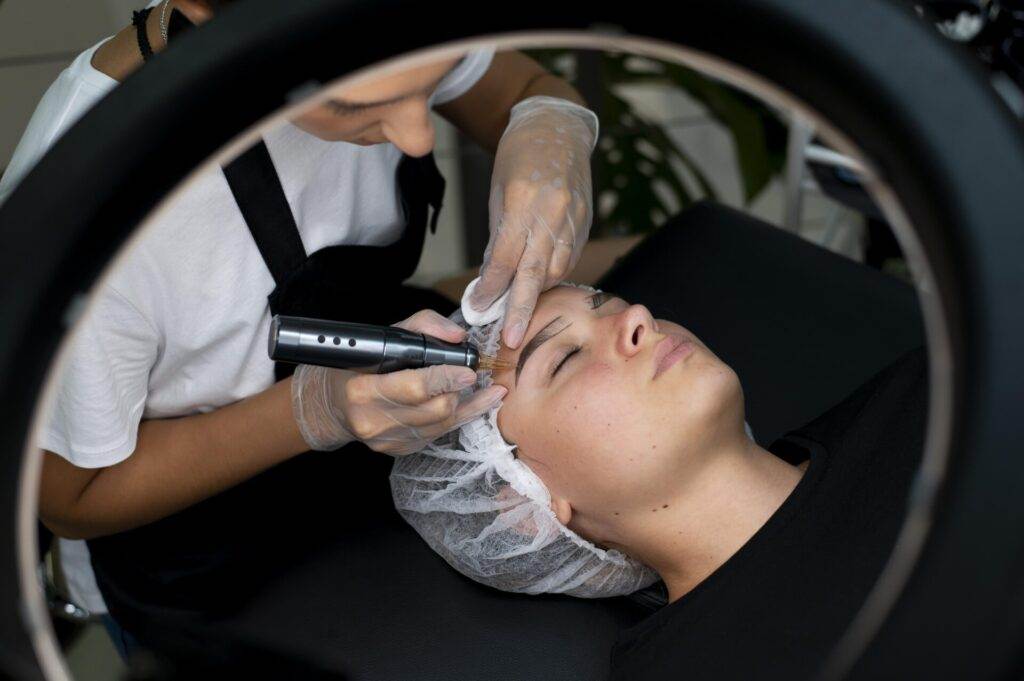
Aftercare Instructions
Proper aftercare is crucial for ensuring the longevity and vibrancy of cosmetic tattoos. After the procedure, clients often receive a set of instructions to follow closely to promote healing and prevent complications. Ignoring these guidelines may lead to fading or undesirable results. Here are essential aftercare tips to keep in mind:
- Keep it Clean: Gently cleanse the tattooed area using a mild, fragrance-free soap to remove any discharge or crust.
- Avoid Water: For at least a week, avoid submerging the tattoo in water. This includes swimming pools, saunas, and hot tubs, as moisture can affect healing.
- Hydration: Keep the area moisturized with a thin layer of recommended ointment, avoiding heavy creams or oils.
- Sun Protection: Use sunscreen on the area once healed to prevent fading from UV exposure.
By following these rules, clients can significantly enhance the healing process and maintain striking results.
Frequency of Touch-Ups
While cosmetic tattoos can last for years, most people will need touch-ups to keep their appearance fresh. The frequency of these touch-ups can vary based on individual preferences and skin type.
- General Guidelines:
- Eyebrows: Touch-ups are typically recommended every 12-18 months.
- Eyeliner: Clients generally return for a touch-up every 2-4 years.
Regular touch-ups not only help maintain the tattoo’s color but also allow for any adjustments in shape or style as personal preferences evolve. Additionally, scheduling a follow-up appointment soon after the initial healing phase can help ensure that clients achieve their desired results without any unexpected fading. Ultimately, a proactive approach to aftercare and touch-ups can lead to long-lasting satisfaction with cosmetic tattoos.
Removal Options for Cosmetic Tattoos
Laser Tattoo Removal
When it comes to removing cosmetic tattoos, laser tattoo removal is widely recognized as one of the most effective methods. This procedure employs advanced laser technology to target and break down the pigment particles in the skin. Over time, the body naturally processes and eliminates these smaller particles, leading to faded or completely removed tattoos. Clients often appreciate the versatility of laser removal, which can effectively address a variety of colors and tattooed areas. The process usually requires multiple sessions, depending on factors such as:
- Tattoo Size: Larger tattoos may take longer to remove.
- Pigment Color: Some colors require different lasers, affecting the number of visits.
- Skin Type: Individual skin responses can vary.
While laser removal is generally considered safe, it may come with some discomfort and potential side effects like temporary redness or swelling. Many clients find it beneficial to schedule a consultation with a qualified professional to discuss expectations and develop a tailored removal plan.
Tattoo Removal Creams
Tattoo removal creams are another option, though they tend to be less effective than laser treatments. These over-the-counter products claim to lighten or remove tattoos through chemical exfoliation. However, results can be highly variable and often require consistent application over several weeks or months.
- Effectiveness: Many users report minimal results, with some experiencing irritation or allergic reactions.
- Cost-Effective: While creams may initially appear cheaper, their effectiveness might lead clients back to considering laser removal down the line.
While some individuals may prefer the convenience of home treatment, it’s essential to approach tattoo removal creams with caution. Consulting with a professional can help clients weigh the pros and cons, ensuring they choose a method that meets their goals safely and effectively. Whether opting for laser removal or exploring creams, understanding the choices available is crucial for achieving the desired outcome.
Pros and Cons of Cosmetic Tattoos
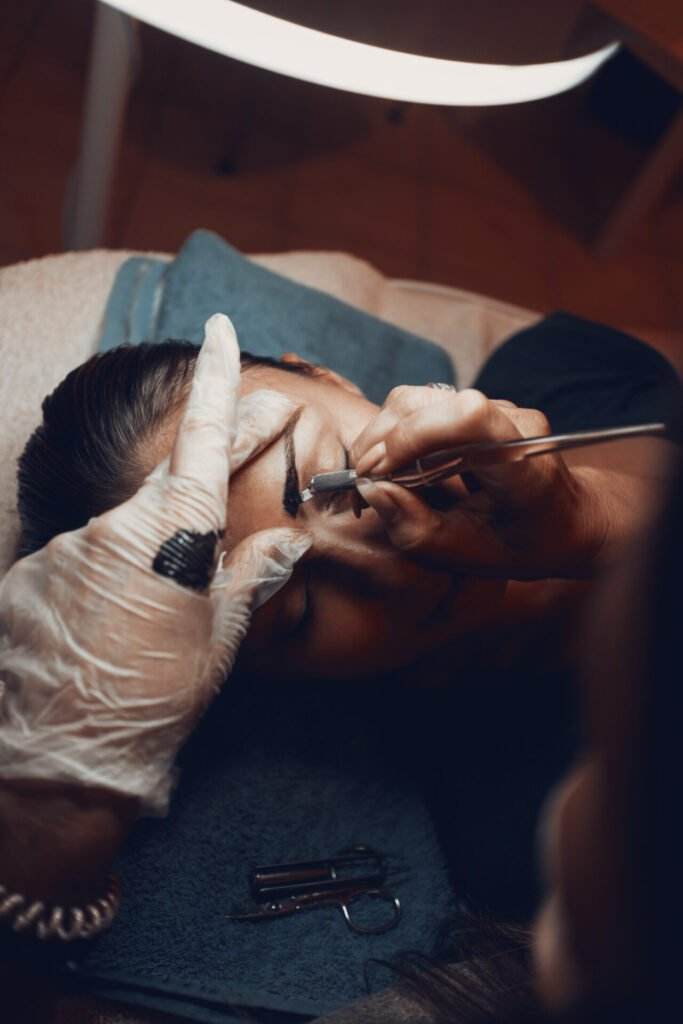
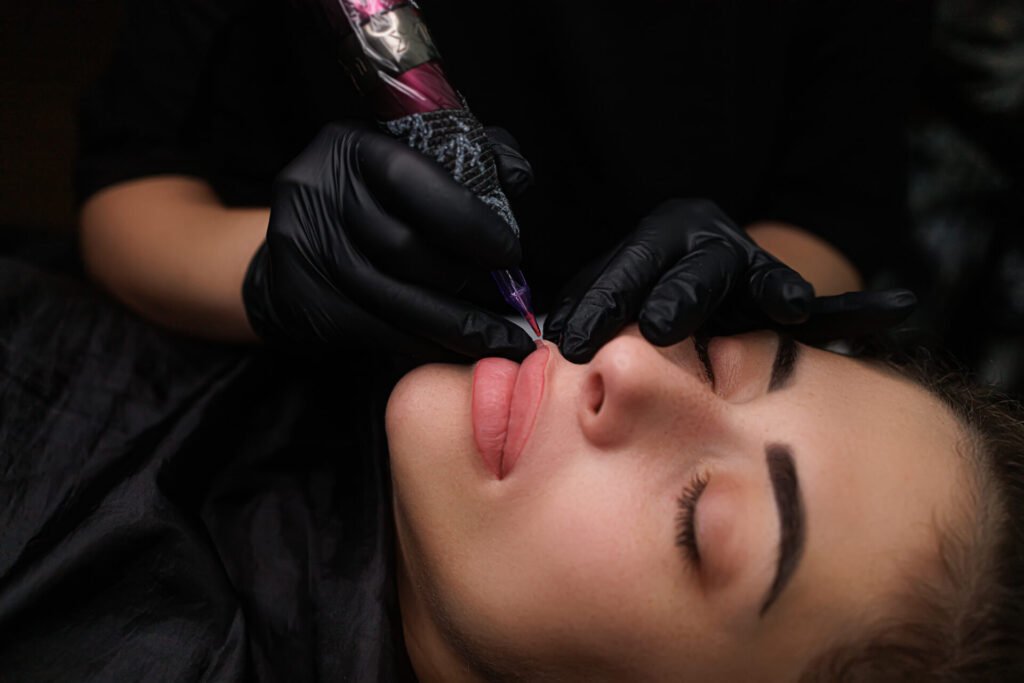
Benefits of Cosmetic Tattoos
Cosmetic tattoos offer a plethora of benefits, which is why they have grown in popularity among individuals seeking to simplify their beauty routines. One of the standout advantages is the significant time-saving aspect; imagine waking up to perfectly defined eyebrows without the need for a makeup brush! Here are some compelling benefits of cosmetic tattoos:
- Long-Lasting Results: With proper care, cosmetic tattoos can last from one to several years, freeing individuals from daily makeup application.
- Enhanced Appearance: Many clients report increased confidence and a more polished look.
- Customization: Procedures can be tailored to the client’s aesthetic preferences, ensuring a unique result.
A friend of mine decided to get lip blushing, and she couldn’t stop raving about how effortlessly beautiful her lips looked each morning—all without any lipstick application!
Risks and Side Effects
However, alongside the benefits, it’s important to consider the potential risks and side effects associated with cosmetic tattoos. Knowledge is power, especially when it comes to making informed decisions. Some common risks include:
- Allergic Reactions: Some individuals may react to the pigments, resulting in skin irritation or other responses.
- Infection: Like any procedure that involves breaking the skin, there is a risk of infection, particularly if aftercare instructions are not followed.
- Fading or Color Changes: Over time, colors may fade or shift hues, which can be disappointing for those expecting vibrant results.
It’s essential to weigh these pros and cons carefully. Consulting a qualified artist and having open discussions about one’s expectations and any concerns can help mitigate risks and enhance satisfaction with the final results. Being well-informed enables individuals to enjoy the many benefits of cosmetic tattoos while being aware of the potential downsides.
Choosing a Qualified Tattoo Artist
Certification and Training
Selecting a qualified tattoo artist is crucial for ensuring a safe and satisfactory cosmetic tattoo experience. One of the first things to check is the artist’s certification and training. Many reputable artists undergo extensive training programs that focus not just on techniques, but also on hygiene and safety practices.
- Licensing: Verify that the artist holds a valid license in your state, as this often indicates adherence to industry standards.
- Certifications: Look for certifications specific to cosmetic tattooing methods, such as microblading or lip blushing.
- Infection Control Training: This is essential to ensure that proper sterilization procedures are followed to avoid any risk of infection.
For instance, when my friend Lisa was considering microblading, she prioritized meeting with artists to understand their training backgrounds. This step gave her peace of mind and confidence in her choice.
Portfolio and Reviews
Another key factor in choosing a tattoo artist is reviewing their portfolio and client testimonials. A well-maintained portfolio showcases the artist’s skills and style, providing insight into their capabilities and the variety of looks they can achieve.
- Before-and-After Shots: Look for clear images that demonstrate the artist’s work on different skin tones and features.
- Client Reviews: Platforms like Instagram and Google Reviews can offer real-world feedback on customer satisfaction and experiences.
By examining portfolios and reading reviews, prospective clients can better gauge the artist’s style and track record. Many successful clients happily share their experience, offering a glimpse into the quality of service one can expect. Ultimately, taking the time to research and choose a well-qualified tattoo artist can significantly enhance the likelihood of a positive outcome, ensuring that the cosmetic tattooing experience is both rewarding and satisfying.
Conclusion
Navigating the world of cosmetic tattoos can be both exciting and daunting. With an understanding of the different types of procedures available, the potential benefits, and the necessary maintenance, individuals can make informed decisions tailored to their preferences and lifestyle. As exciting as these enhancements can be, personal experiences, testimonials, and visual evidence underscore the importance of choosing the right artist and techniques. Whether it’s achieving beautifully defined eyebrows or luscious lips, cosmetic tattoos can offer transformative results that enhance one’s natural beauty. Reflecting on my own experience, I found that my newfound confidence was worth the investment, making early mornings and touch-ups a thing of the past!

